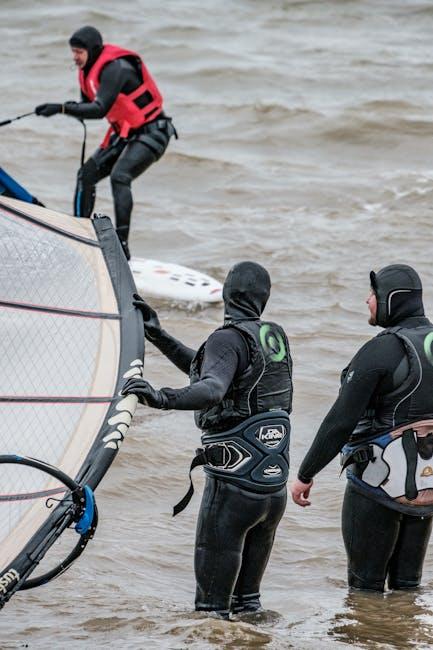In an era where conformity often dictates the rhythm of daily life, extreme sports athletes stand out as the quintessential modern-day rebels. These daring individuals defy societal norms and embrace the thrill of the unknown, challenging both physical limits and conventional expectations. Their pursuits—ranging from scaling sheer rock faces to riding tumultuous waves—captivate audiences worldwide, not merely for the spectacle, but for the audacious spirit they embody. This article delves into the reasons why extreme sports athletes are perceived as rebels of our time, exploring the cultural, psychological, and historical contexts that frame their defiance. By examining their motivations and the societal reactions they provoke, we uncover the profound impact these athletes have on the broader narrative of rebellion and individualism in contemporary society.
Cultural Perception and the Rebel Archetype in Extreme Sports
In many cultures, extreme sports athletes are celebrated as embodiments of the rebel archetype, challenging the boundaries of what is deemed possible and acceptable. This perception is deeply rooted in the daring feats and nonconformist attitudes that these athletes exhibit. Extreme sports, from base jumping to big wave surfing, often involve risk-taking and pushing limits, aligning them with the classic image of the rebel who defies norms and expectations.
- Defiance of Conventional Limits: Athletes in extreme sports often operate outside the traditional structures of organized sports, eschewing the rigid rules and regulations in favor of personal freedom and self-expression.
- Individualism and Authenticity: The emphasis on personal style and unique performance in extreme sports highlights the athletes’ commitment to authenticity, a hallmark of the rebel archetype.
- Challenging the Status Quo: By engaging in activities that are often considered fringe or underground, these athletes challenge societal norms and encourage a rethinking of what is possible.
This cultural perception is further amplified by media portrayals that romanticize the lone adventurer battling against nature or the self, crafting narratives that resonate with audiences drawn to stories of independence and resilience. As a result, extreme sports athletes are often seen as modern-day rebels, inspiring others to embrace their own adventurous spirits and question the limitations imposed by society.

The Psychological Drive Behind Risk-Taking Behaviors
At the core of what drives extreme sports athletes lies a potent cocktail of psychological factors that compel them to push boundaries. The allure of risk-taking is deeply embedded in human nature, often linked to an intrinsic need for exploration and self-discovery. Adrenaline, a hormone released during moments of intense excitement or fear, plays a crucial role in this behavior. It creates a euphoric sensation, which, for many athletes, becomes addictive. Moreover, engaging in high-risk activities often provides a sense of control over one’s destiny, a stark contrast to the predictability of everyday life.
- Thrill Seeking: Many athletes have a high tolerance for risk and are drawn to the excitement of danger.
- Self-Expression: Extreme sports offer a platform for athletes to express individuality and non-conformity.
- Social Identity: Participation in these activities often creates a sense of belonging within a community of like-minded individuals.
- Achievement: Conquering challenging feats brings a profound sense of accomplishment and boosts self-esteem.
These elements not only explain why athletes engage in extreme sports but also why they are perceived as modern-day rebels, challenging societal norms and redefining the limits of human potential.

Societal Impacts and the Challenge to Traditional Norms
In a world where traditional norms often dictate the rhythm of life, extreme sports athletes emerge as the avant-garde, challenging the status quo with their daring feats and unyielding spirit. Their pursuits are not just adrenaline-fueled escapades; they are a profound statement against societal conventions. These athletes defy expectations and reshape perceptions of what is deemed acceptable or possible. By embracing risk, they underscore a philosophy that values personal freedom and the pursuit of passion over conventional safety and predictability. Their endeavors often spark dialogues about the nature of courage, individuality, and the boundaries of human capability.
- Breaking Barriers: Extreme sports athletes question societal constraints, advocating for a life lived on one’s own terms.
- Redefining Success: Traditional markers of success are often discarded in favor of personal fulfillment and achievement.
- Cultural Influence: Their exploits influence popular culture, inspiring others to challenge their own limitations.
These athletes become modern-day rebels, not through mere defiance, but through a thoughtful rejection of norms that stifle creativity and personal growth. Their actions serve as a testament to the power of the human spirit, illustrating that sometimes, the most profound changes come from those who dare to stand apart.
Encouraging Safe Practices While Embracing the Spirit of Adventure
Extreme sports athletes are often hailed as the modern-day rebels, pushing boundaries and defying conventions. Yet, behind the adrenaline rush and daring feats lies a profound commitment to safety and preparation. These athletes understand that while the thrill of the sport is undeniable, ensuring safety is paramount. They meticulously plan each adventure, considering factors such as weather conditions, equipment reliability, and personal skill levels. This blend of daring and caution is what truly sets them apart, allowing them to explore the edge of possibility without compromising their well-being.
To encourage safe practices while indulging in their adventurous pursuits, extreme sports athletes adhere to several key principles:
- Thorough Risk Assessment: Evaluating potential hazards and preparing contingency plans.
- Skill Development: Regular training to hone their abilities and minimize errors.
- Quality Equipment: Investing in high-quality gear that meets safety standards.
- Community Engagement: Sharing experiences and tips with fellow enthusiasts to foster a culture of safety.









